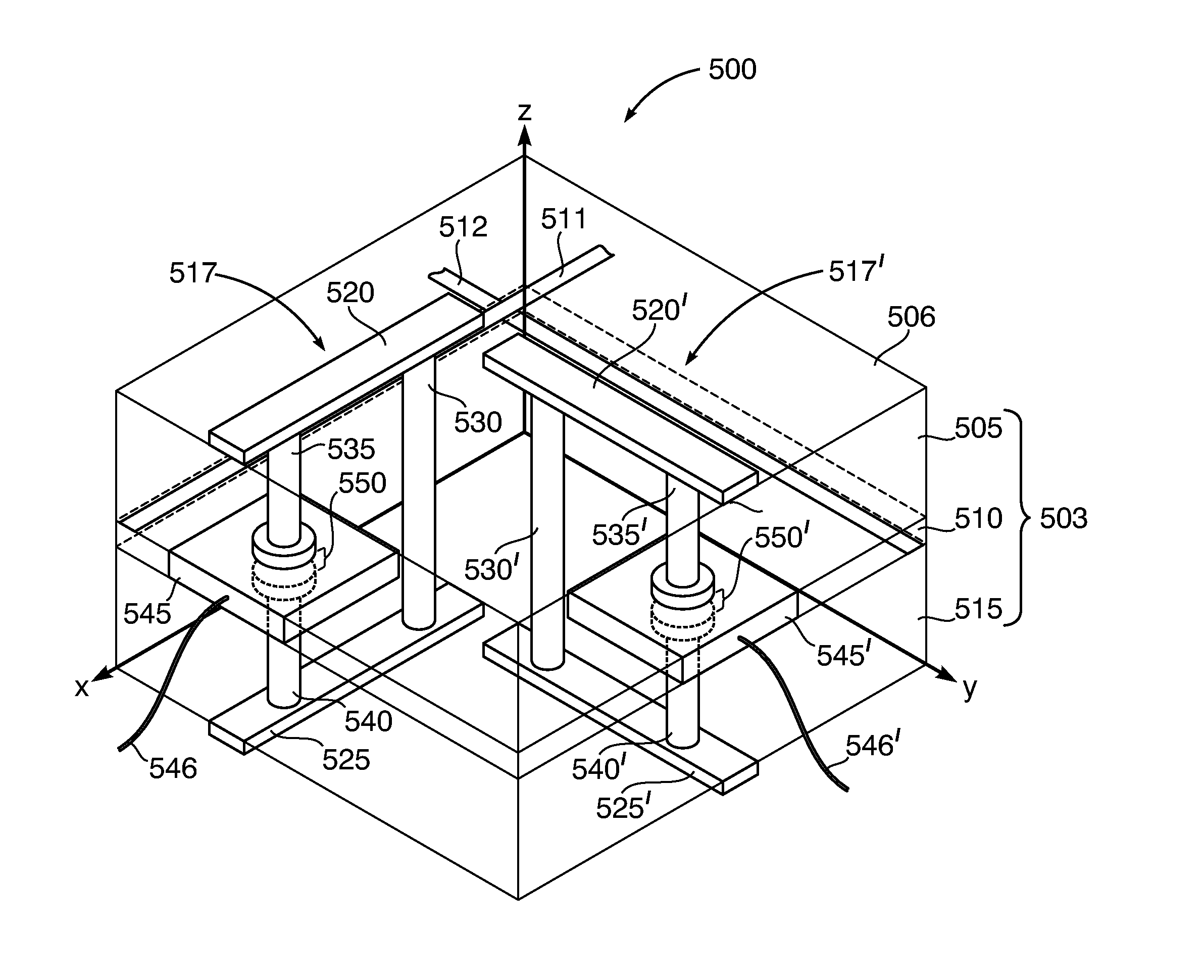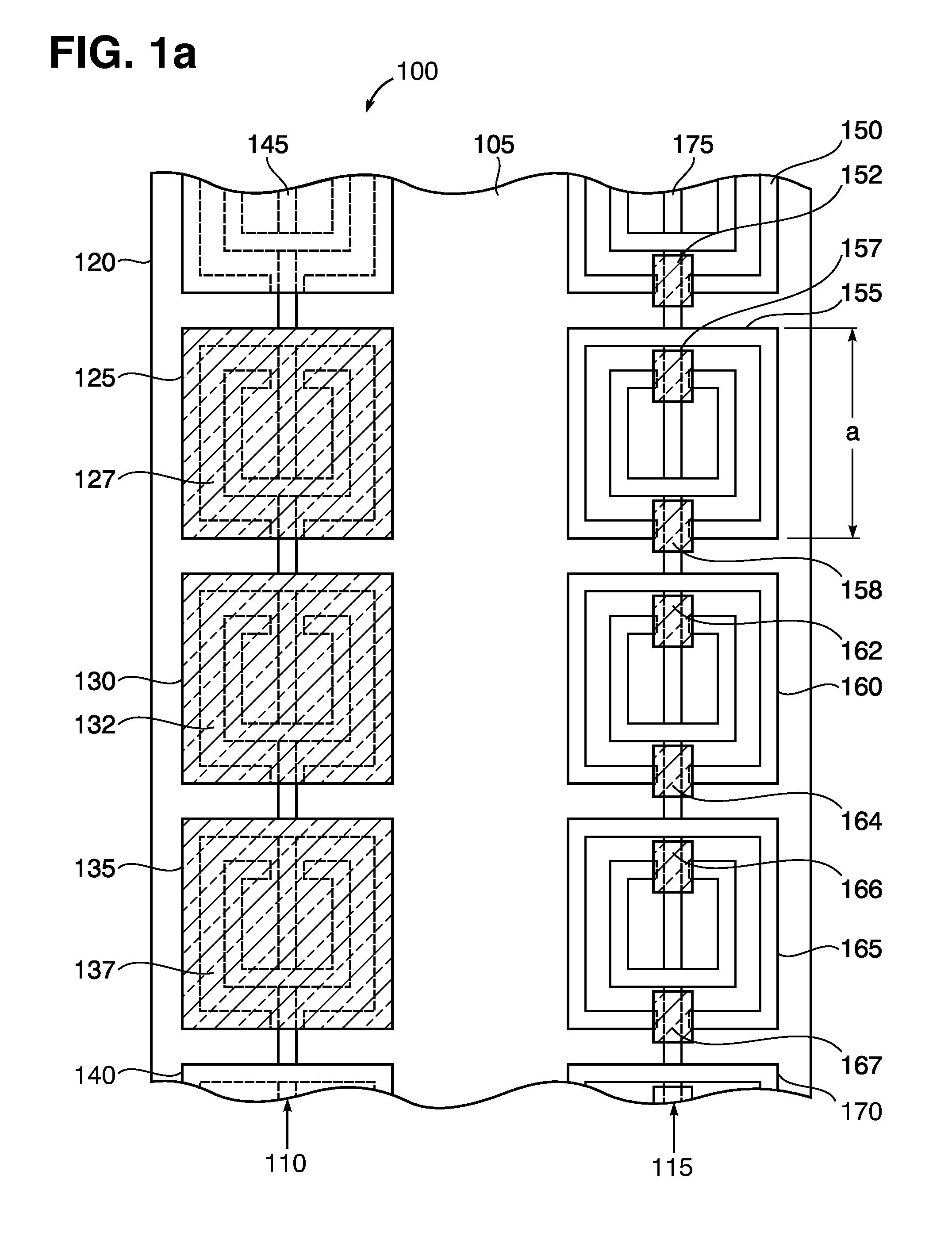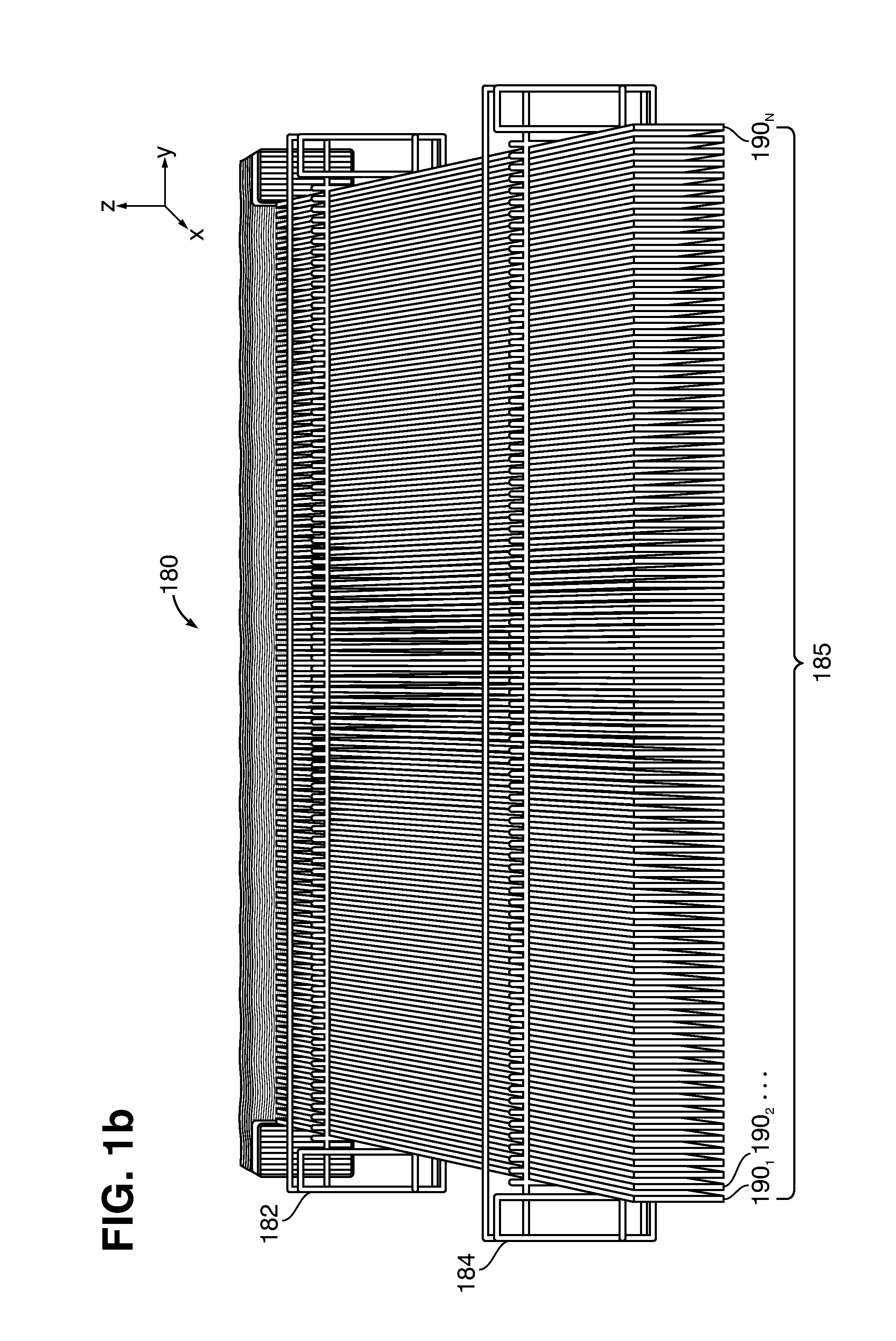Dynamically variable metamaterial lens and method
a metamaterial and dynamic field technology, applied in the field of dynamic field, can solve the problems of limited number of special lens materials, limited material effective for terahertz range optical elements, and small dependence of materials on frequency or wavelength
- Summary
- Abstract
- Description
- Claims
- Application Information
AI Technical Summary
Benefits of technology
Problems solved by technology
Method used
Image
Examples
example 1
[0104]FIG. 6 shows a photo-capacitance spectrum of steady state photo-capacitance for GaAs measured at 77° K. Illuminating photon energy was plotted against magnitude of photo-capacitance. Three distinct levels (605, 610, 615) are shown, one for each charge state of EL2. These are localized states with discrete energy levels. The energies are referenced to the valence band. It was noted that the 0.77 eV value was within the range of experimental error of the accepted value of 0.73 eV at 77° K. Excitation of electrons from the valence band was used to reduce the EL2 energy level excitation states. The band gap for GaAs is 1.424 eV (A=0.89 μm) at 300° K. The band gap energy is the energy required to excite an electron from the valence band to the conduction band in FIG. 6. For the first type of EL2 transition with threshold energy of 0.54 eV (λ=2.3 μm), an electron is excited into an EL2(++) state, forming EL2(+) and there is a 10% change in capacitance. For the second type of transit...
example 2
[0105]FIG. 7 shows the effect of varying the intensity of the controlling electromagnetic radiation on the capacitance of an undoped SI GaAs filled capacitor. Gate voltage was plotted versus capacitance. A tungsten lamp was the source of the controlling electromagnetic radiation. The lamp produced a broad spectrum ranging from the infrared to visible light. There was about a 200% change in capacitance between the value in the region 705 labeled “dim light” and the value in the regions 710, 715 labeled “bright light.” As the level of the controlling electromagnetic radiation was varied, the gate voltage was varied linearly with time. As shown, the capacitance was essentially independent of gate voltage above approximately 5 eV. Typical capacitances for this type of experiment were found to range from 0.035 pF / mm2 to 0.118 pF / mm2 for a 1 mm thick undoped SI-GaAs sample.
example 3
[0106]An SRR was constructed according to FIG. 1a. The total inductance of the SRR was calculated to be: Ltot=4.9 nano-Henries. The measured resonance frequency was: f=11 GHz. The formula:
f=1 / 2π(LtotC)1 / 2, Eq. (6)
yielded C=43 femto-Farads for the capacitance of the outer SRR only, for simplicity, neglecting any effects of the inner structure. In this case, a change of capacitance ΔC=8.6 femto-Farads yields a 1.1 GHz reduction in resonant frequency. Similarly, an SRR was constructed according to FIG. 4, the total inductance was Ltot=5.8 nano-Henries and the resonant frequency was f=8.5 GHz. This gave a capacitance of C=61 femto-Farads. Thus a shift of 10% in frequency requires a 20% change in capacitance, or ΔC=12 fF. It is apparent that capacitive tuning concept can be scaled to other wavelengths.
PUM
 Login to View More
Login to View More Abstract
Description
Claims
Application Information
 Login to View More
Login to View More - R&D
- Intellectual Property
- Life Sciences
- Materials
- Tech Scout
- Unparalleled Data Quality
- Higher Quality Content
- 60% Fewer Hallucinations
Browse by: Latest US Patents, China's latest patents, Technical Efficacy Thesaurus, Application Domain, Technology Topic, Popular Technical Reports.
© 2025 PatSnap. All rights reserved.Legal|Privacy policy|Modern Slavery Act Transparency Statement|Sitemap|About US| Contact US: help@patsnap.com



